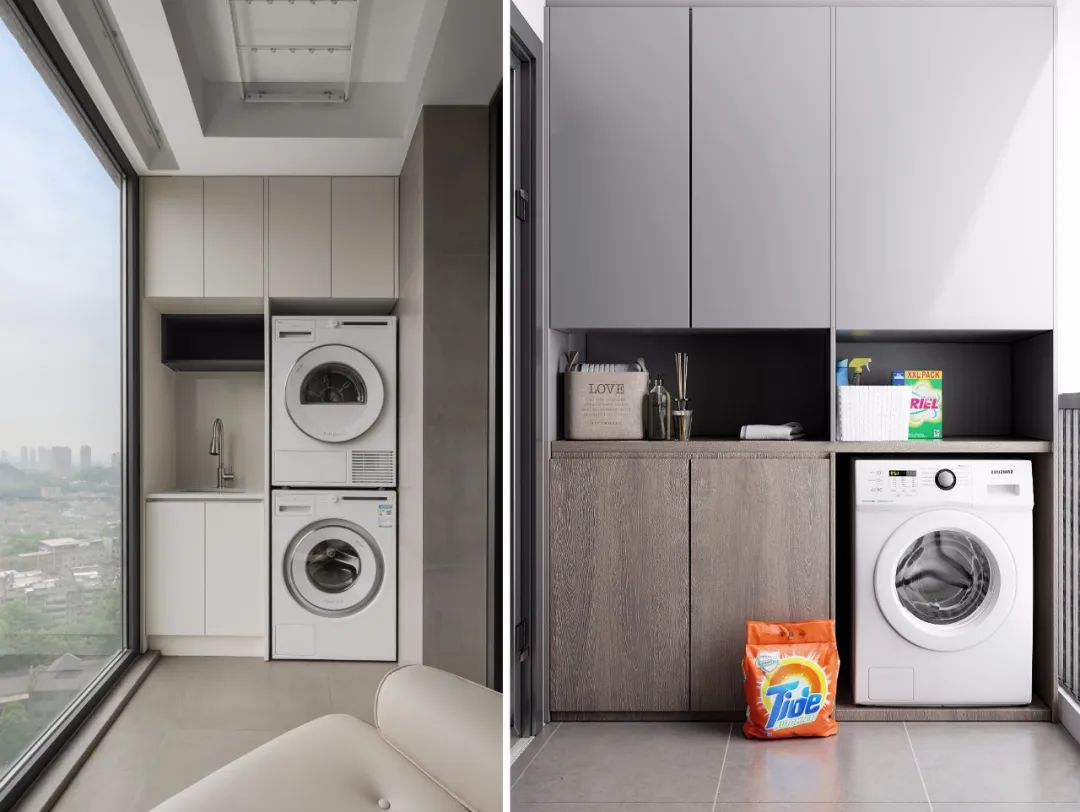Baimao Trend Design Studio
Welcome to Follow Us
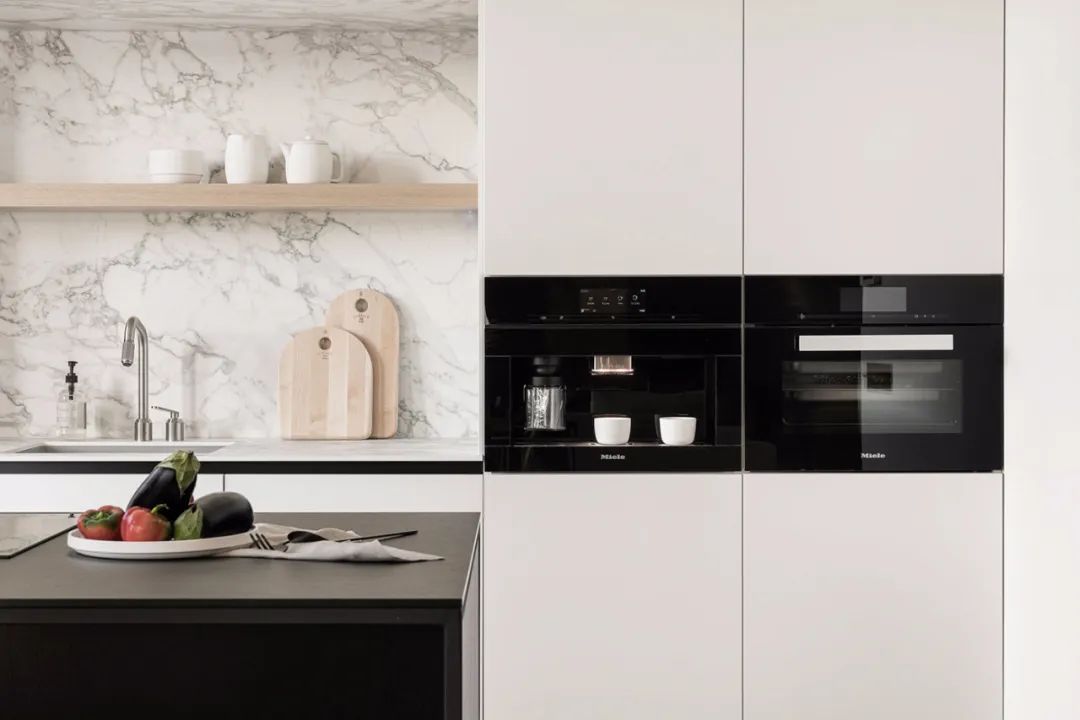
Design Consultant | Chen Damao
Especially in kitchen spaces and balconies, whether large or small appliances can take up a lot of space. Cluttered appliances placed on countertops or on the floor against walls can make the space look chaotic and uncomfortable. Therefore, embedded design addresses this pain point by concealing appliances within cabinets or walls.
So, how should the design of embedded appliances be done? What factors need to be considered?
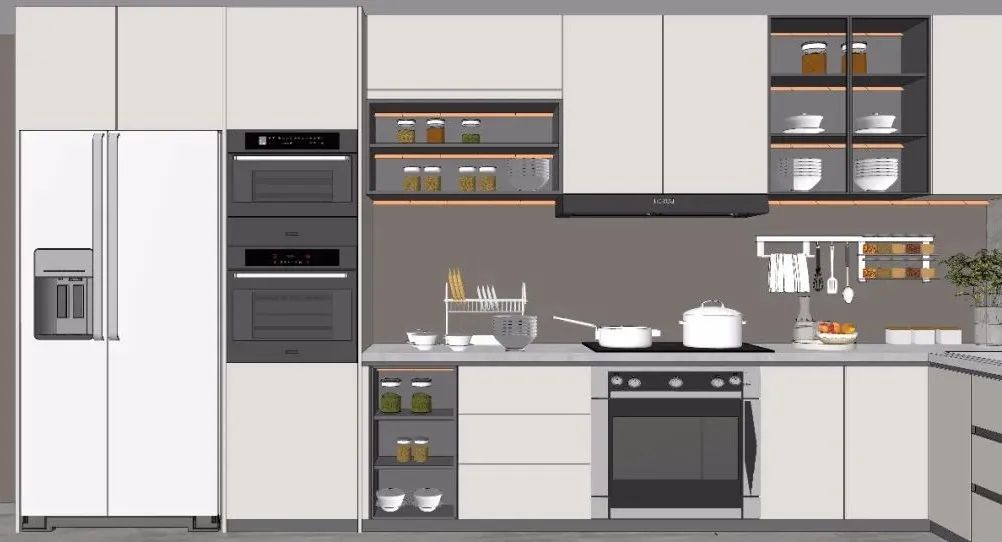
This article focuses on the following aspects
How to design “embedded appliances”?
1. What is embedded design?
2. Prerequisites for embedded appliance design
3. Scale requirements for embedded appliances
4. Design requirements for heat dissipation and plumbing
What is “embedded appliances” design?
It refers to the installation of commonly used household appliances, such as refrigerators, ovens, steamers, microwaves, sterilizers, dishwashers, washing machines, dryers, televisions, etc., all embedded within custom cabinetry or walls.
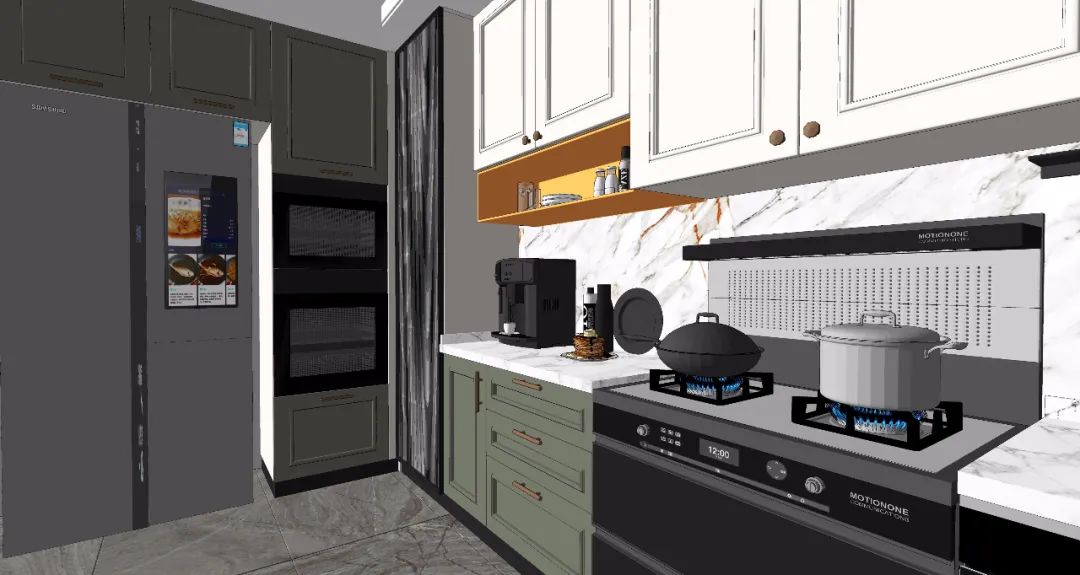
Thus, it saves space, making the entire area look more cohesive, cleaner, and aesthetically pleasing, greatly enhancing the space’s usability and reducing waste.
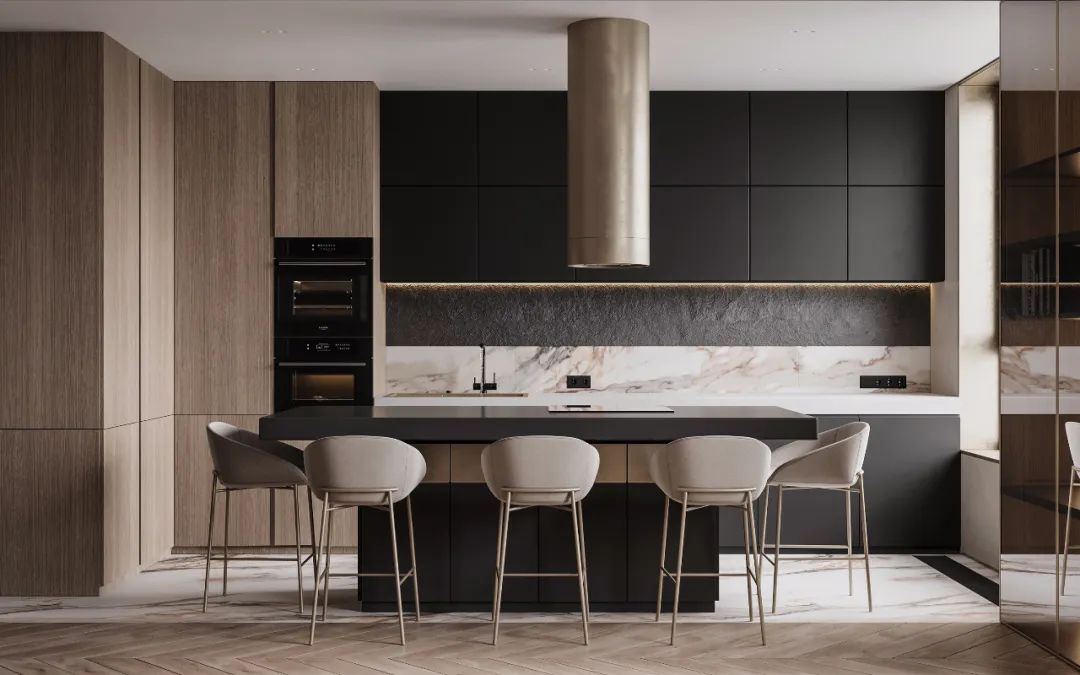
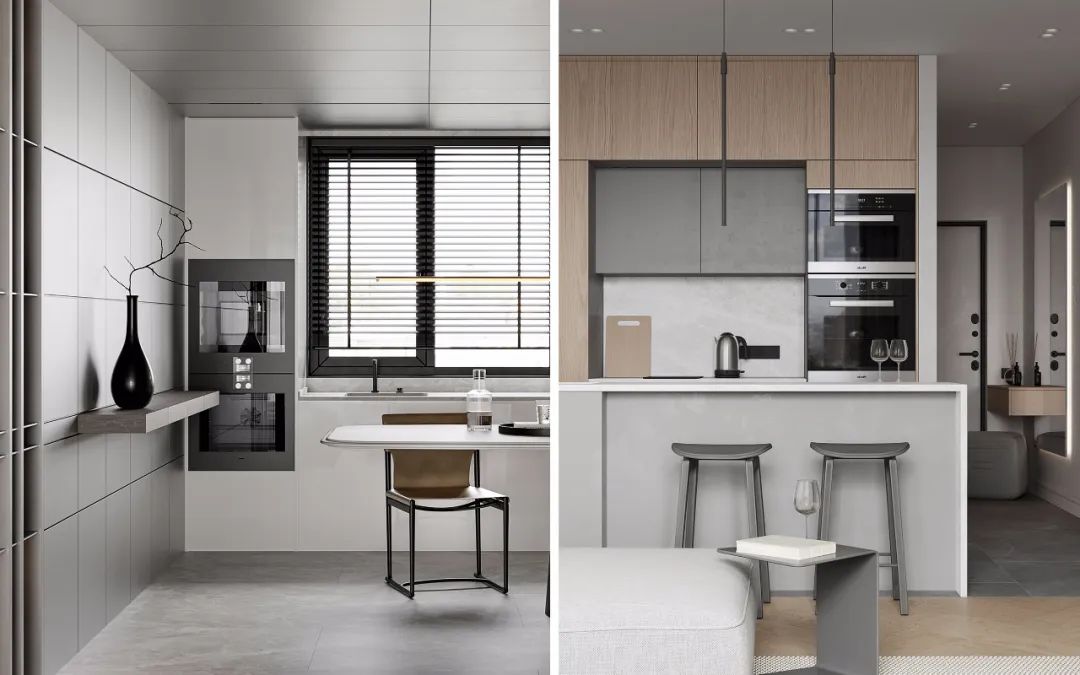
Prerequisites for “embedded appliances” design
Embedded appliance design is not suitable for all spaces; all designs should be pragmatic. Therefore, the design of embedded appliances must meet the following conditions:
Generally, balcony spaces mostly adopt embedded designs, embedding washing machines, dryers, and sinks into custom cabinetry.
The main issue arises in kitchen spaces; embedded appliance design does not mean breaking a part of the wall to stuff appliances inside, but rather flexibly arranging the positions of appliances from a holistic perspective.
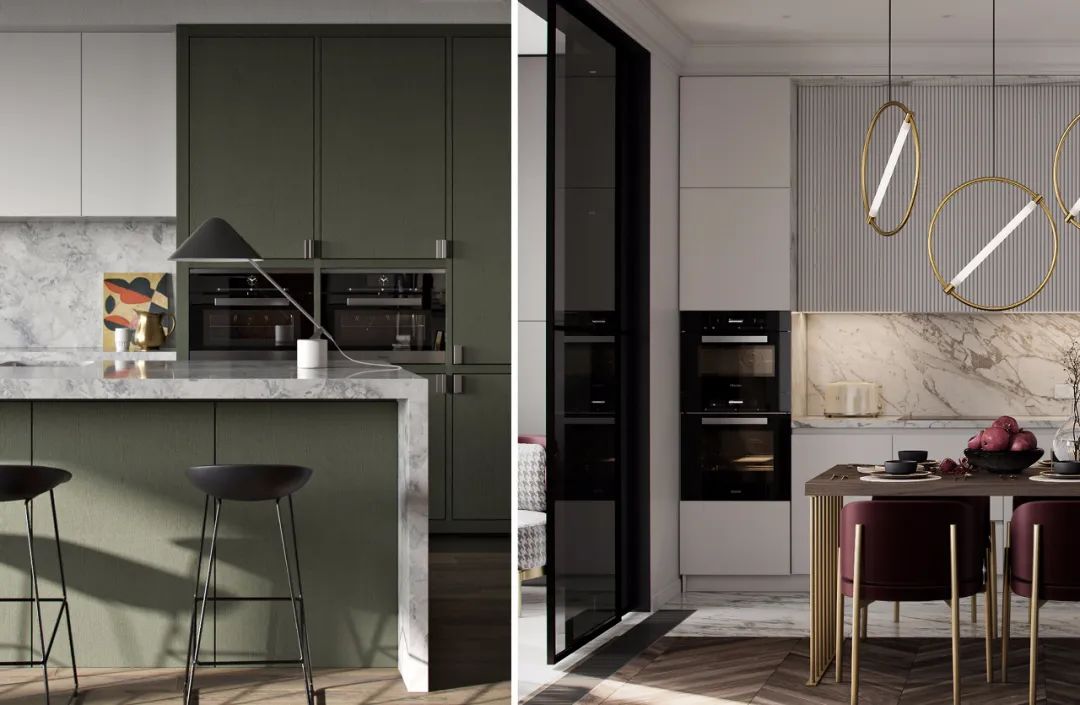
Essentially, it still occupies the kitchen’s space area. The appliance doors and standing space require sufficient dimensions; thus, if the kitchen is too small to provide adequate storage and passage space, embedded appliance design cannot be implemented.
2. Sufficient customer budget
Embedding appliances, both in terms of the appliances themselves and custom cabinetry, is significantly more expensive than non-embedded designs. Therefore, to truly implement this, the customer’s budget must be sufficient.
3. Appliance dimensions and after-sales service
Embedded appliances differ from ordinary appliances; installation is required. Care must be taken regarding the dimensional relationship between the appliance and the cabinet, or it won’t fit. Additionally, after-sales service must be considered for convenient maintenance and repairs.
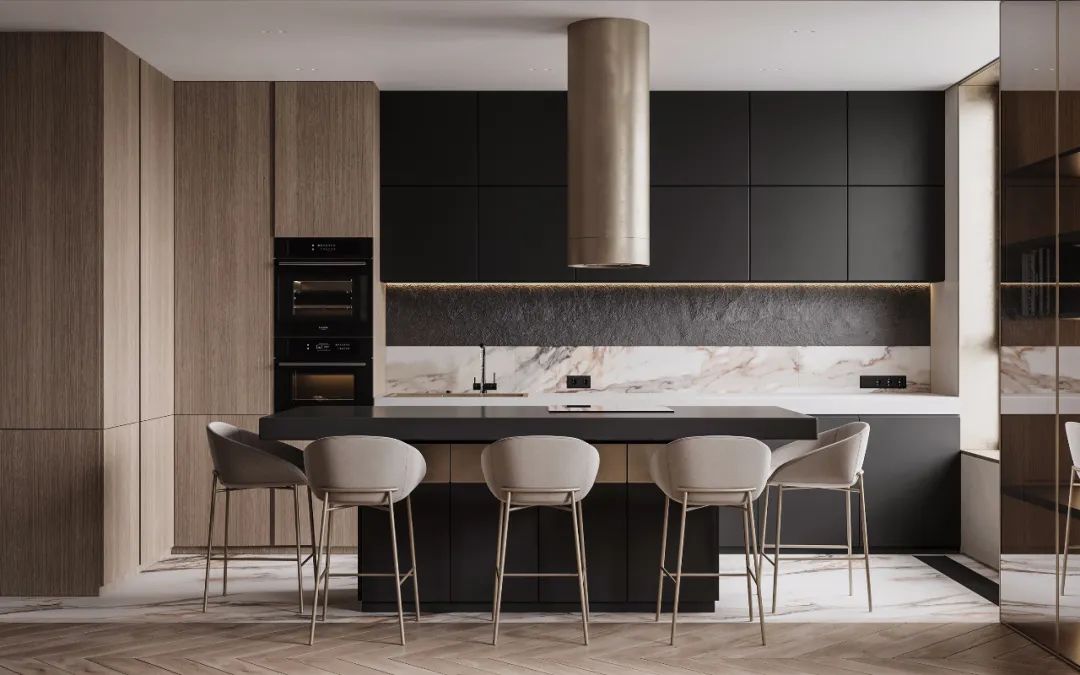
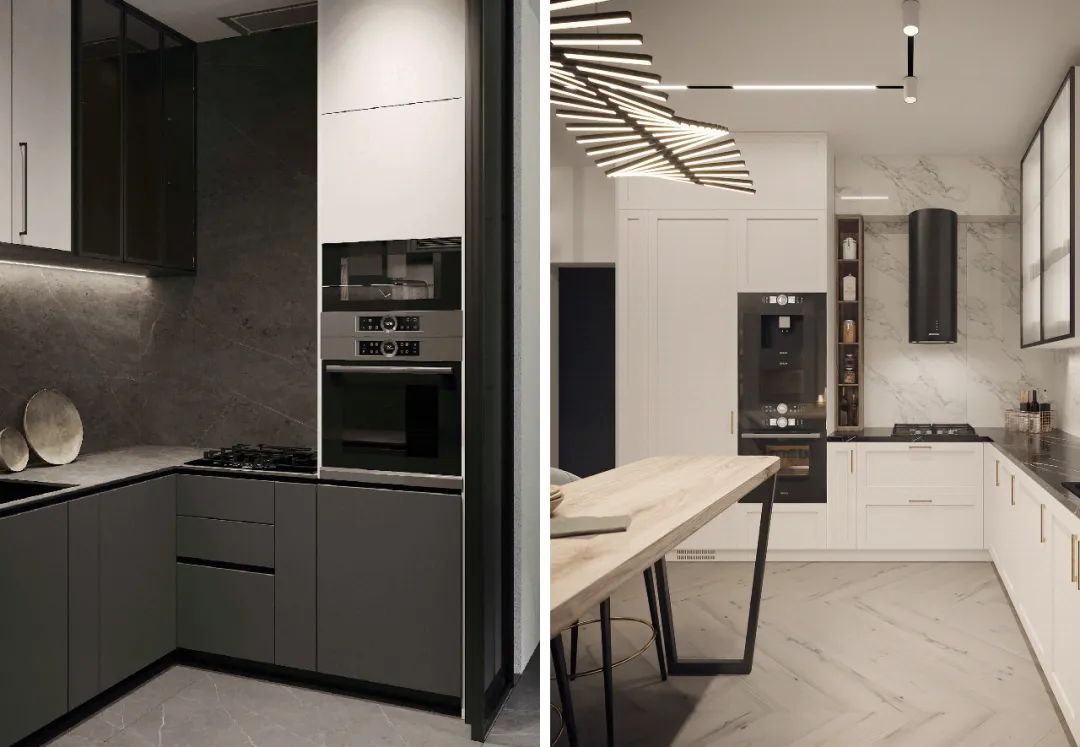
Scale requirements for “embedded appliances” design
Embedded appliances must consider two main aspects of size, namely the cabinet and the appliances.
1) Cabinet size requirements
When considering the cabinet size design, the opening size of the appliances and the standing space must be taken into account. Appliances are generally embedded in base cabinets or full-height cabinets, with a conventional cabinet depth of approximately 600mm. After arranging the cabinets, a passage size of ≥1200mm must be ensured.
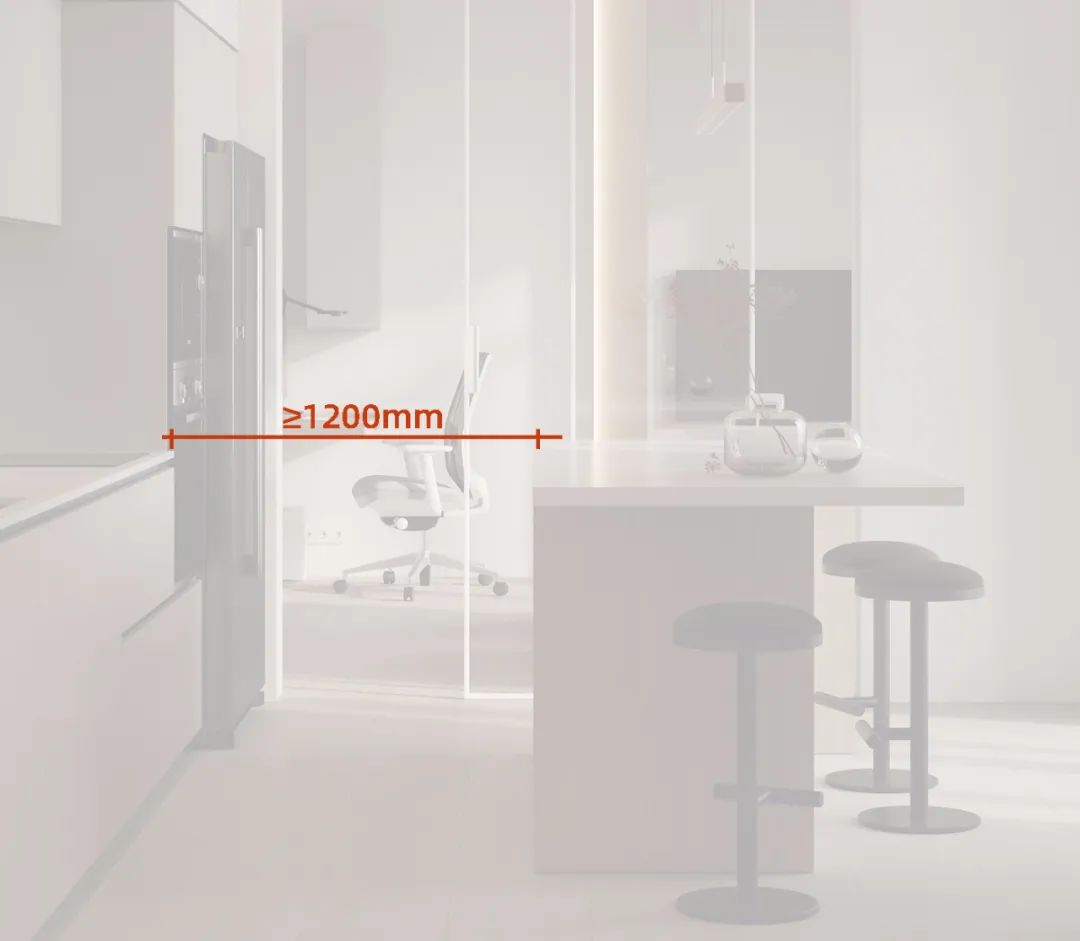
Embedded appliances typically open outward, thus when opening, they occupy passage dimensions. The opening size is approximately 500mm or more, so after opening, sufficient standing space must be ensured, generally reaching at least 600mm in width. Therefore, for embedded appliance cabinets, the passage area must reach at least 1200mm to be adequate.
Passage area width ≥ Appliance opening size + Standing space
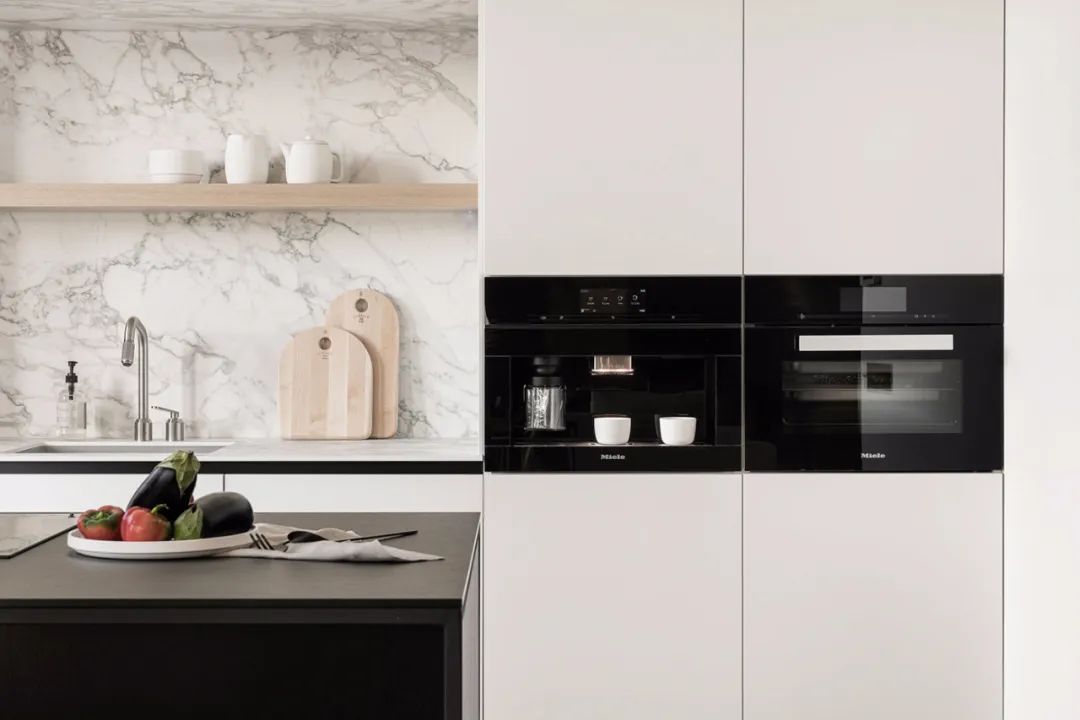
2) Appliance size requirements
As for which appliances need to be embedded and their sizes, all must be determined before making cabinets to facilitate reserving appropriate dimensions and pre-allocating plumbing and electrical outlets.
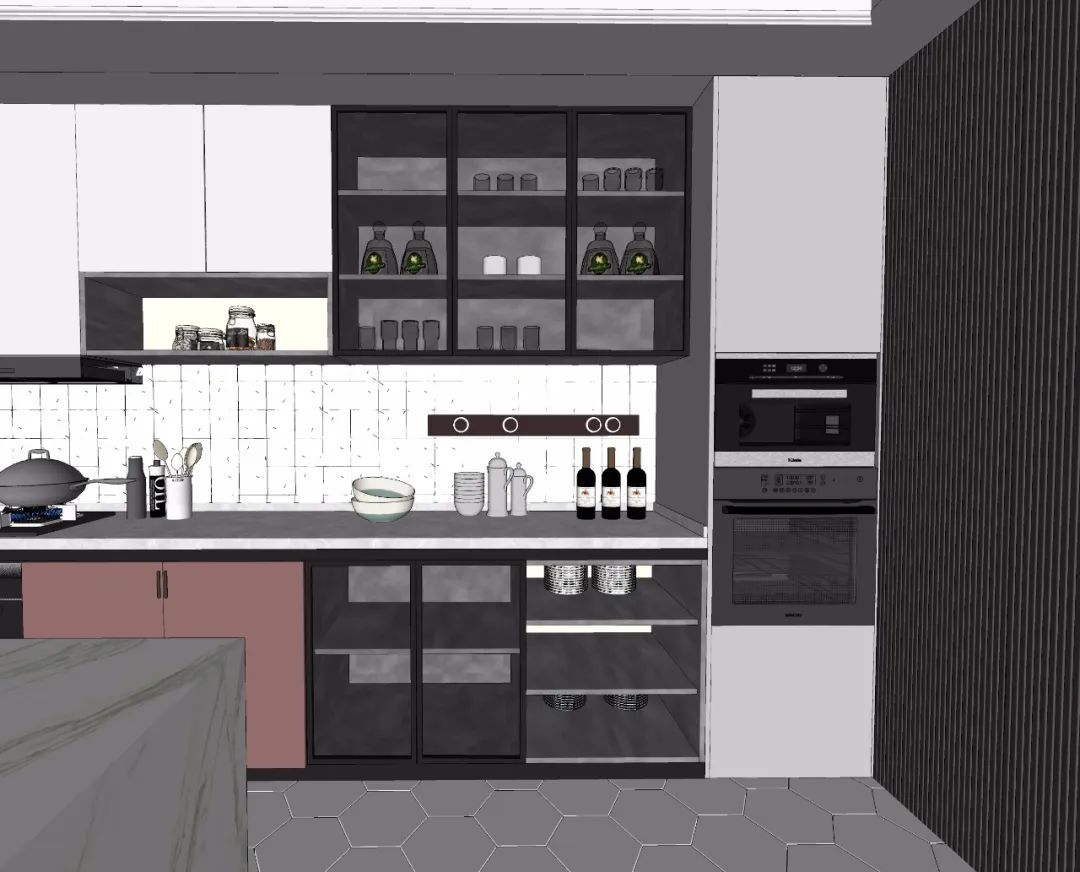
Design requirements for heat dissipation and plumbing
1) Heat dissipation design requirements
One important factor for these embedded appliances is heat dissipation, especially in a closed cabinet where the enclosed state can slow down heat dissipation, thus affecting efficiency.

On the other hand, high temperatures can have a considerable negative impact on the cabinet itself. Different appliances have different heat dissipation methods and locations. Some dissipate heat from the back or bottom, while others dissipate heat from all sides. Therefore, this must be considered during the design.
The core logic of heat dissipation is: maintain distance between the appliance and the cabinet while protecting the cabinet.
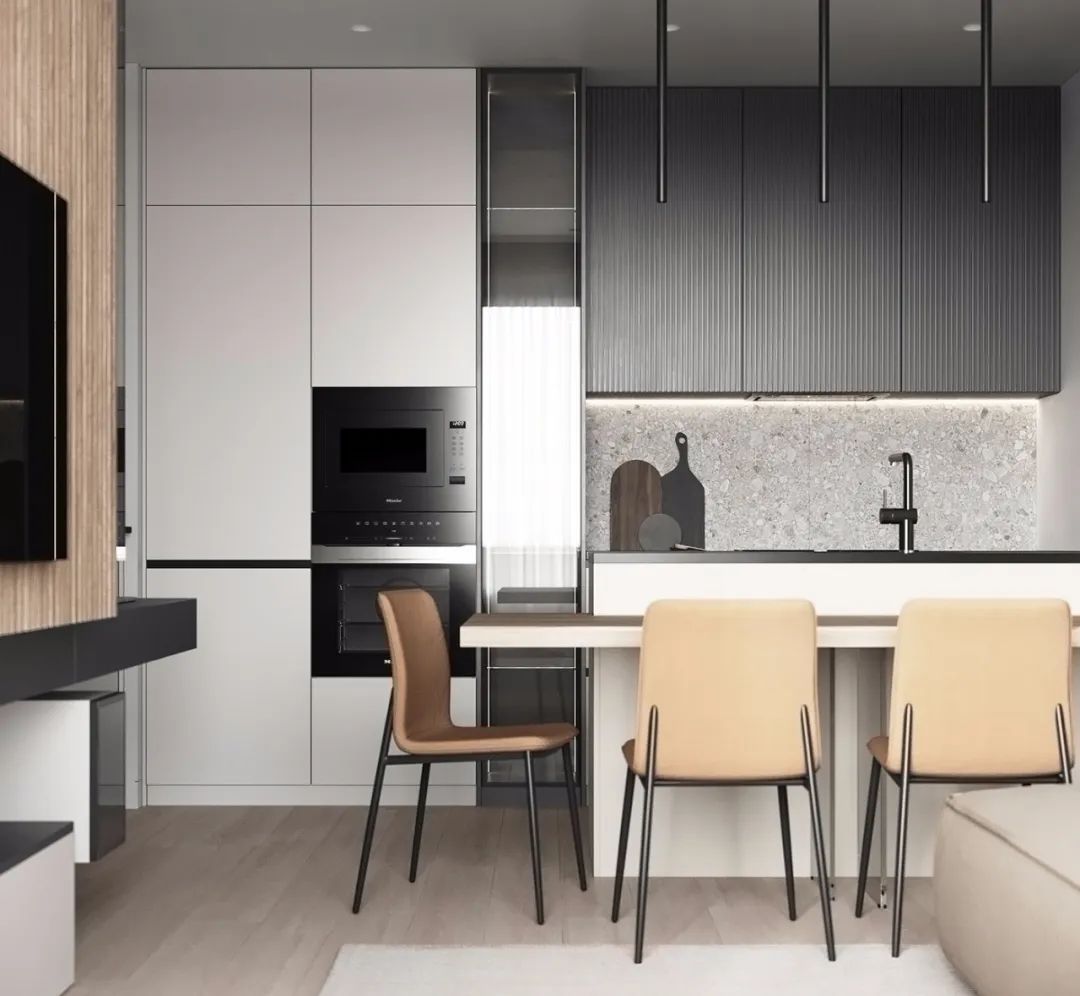
Thus, when reserving cabinet dimensions, a certain distance must be ensured between the appliance and the cabinet. Furthermore, the material selection for cabinet panels cannot be the same as conventional materials used for wardrobes or TV cabinets; high-temperature and deformation-resistant materials should be chosen. Alternatively, heat-insulating panels can be installed inside the cabinet, which not only extends the appliance’s lifespan but also protects the cabinet.
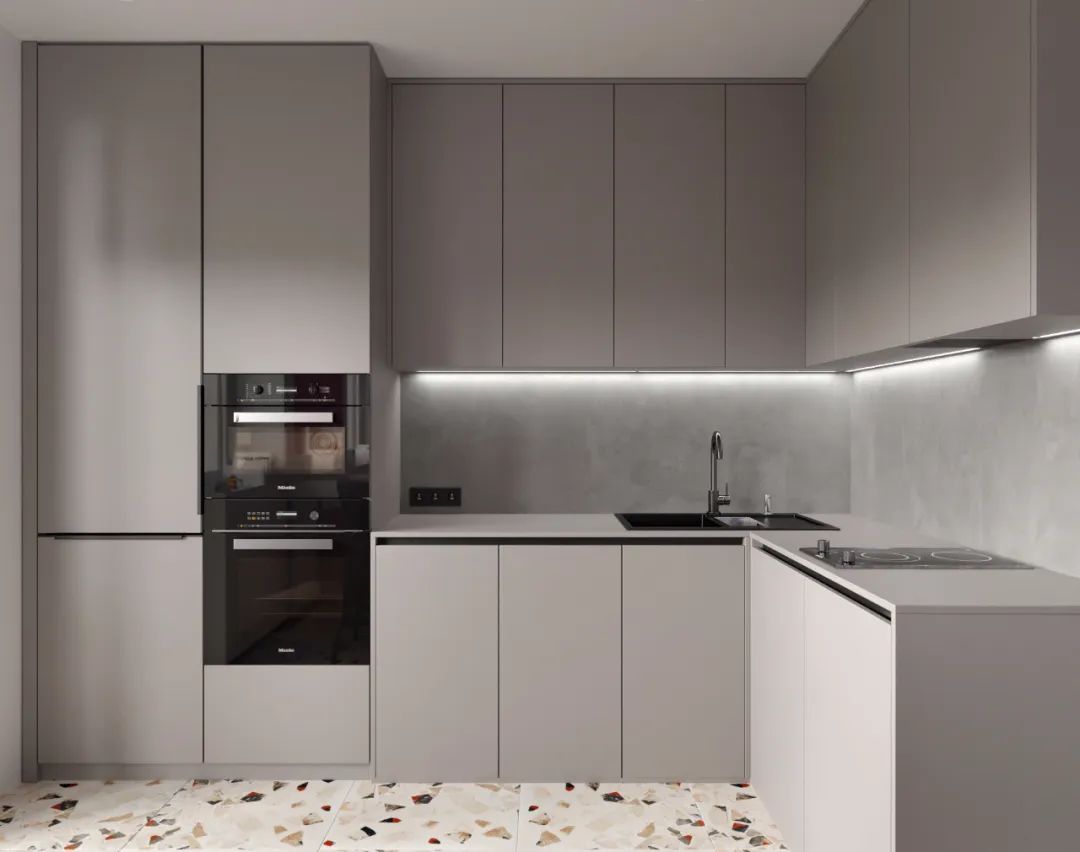
Different appliances have different heat dissipation measures and requirements
01. Oven
If the oven is to be embedded, it is best to choose a front-venting oven, and the cabinet where the oven is installed should not have a back panel. Maintain a gap between the oven and the cabinet to achieve ventilation and heat dissipation. The cabinet material must be heat-resistant.
If the oven is installed in a base cabinet, it should not be placed beneath the stove. Both gas stoves and ovens have high heat dissipation requirements, and placing them together can damage the appliances and pose safety risks such as explosions.
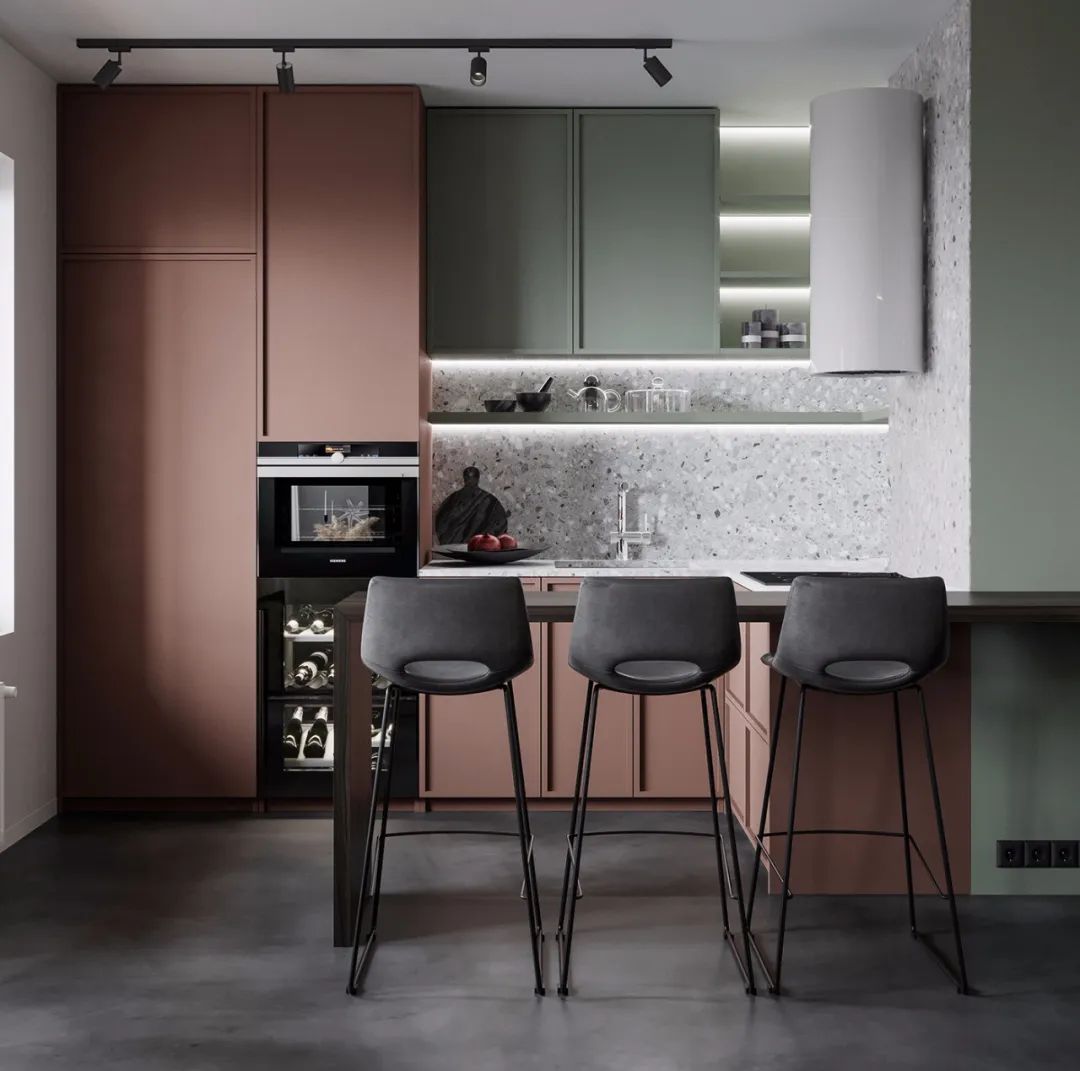
02. Microwave
The heat dissipation logic for microwaves is similar; they need to maintain distance from surrounding cabinets, with at least 100mm distance above and 50mm on either side to achieve ventilation and heat dissipation. When selecting microwaves, front-venting types should also be chosen.
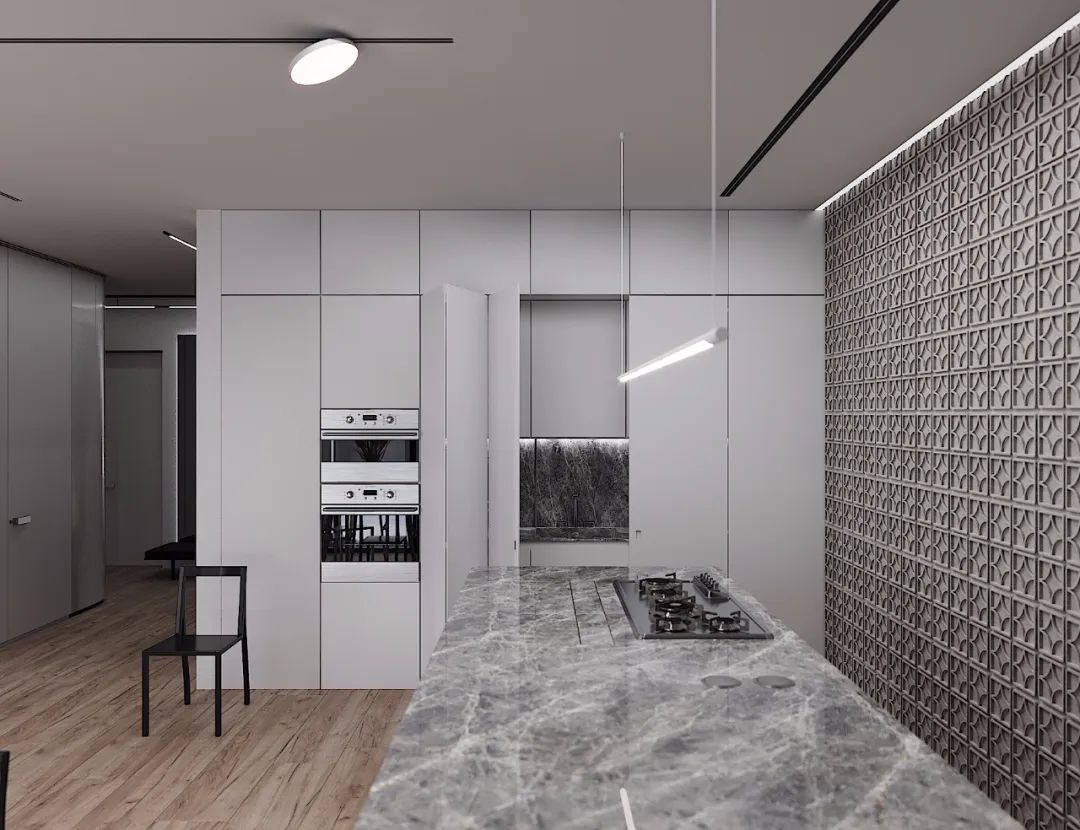
Sterilizers are generally installed directly below the stove, maintaining a distance of ≥150mm between them, with a square ventilation hole of 120mm on the back cabinet reserved in advance for ventilation and heat dissipation.
Embedded refrigerators have their main heat dissipation sources on both sides and the back; thus, they must maintain a certain distance from the cabinets or walls, with a minimum distance of 100mm.
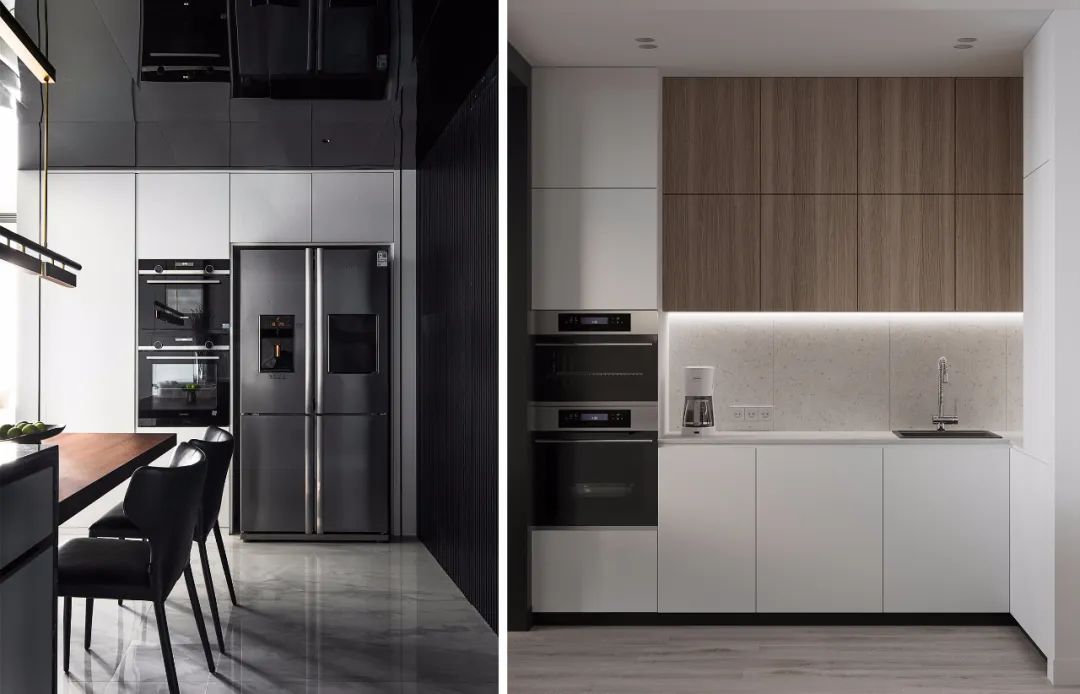
2) Plumbing design requirements
It is necessary to consider the arrangement and placement of appliances in advance to design the sockets. Generally, sockets should be arranged on the side or in adjacent cabinetry (pre-drilled holes are required), avoiding direct placement behind the appliances.
Why is this important? Imagine if the appliance dissipates heat from the back, and the socket is also located there; this can cause damage to the appliance and pose potential safety hazards.
From a dimensional perspective, placing the socket behind the appliance occupies part of the embedded depth, causing the appliance to protrude from the cabinet, severely affecting aesthetic appearance.
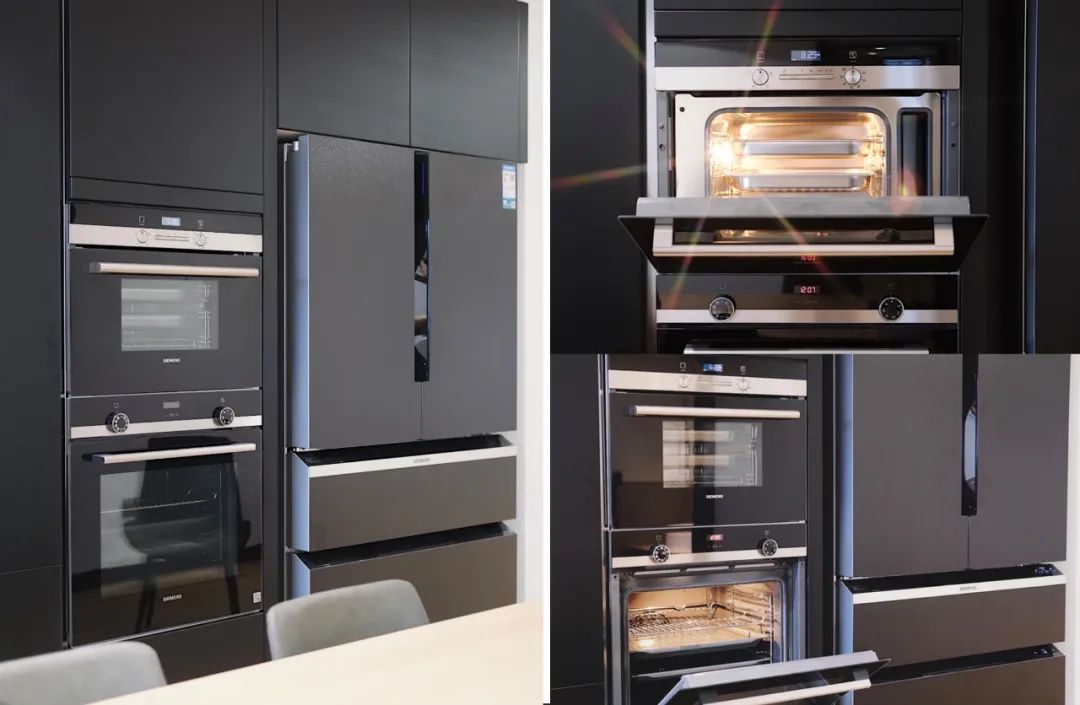
Before making the cabinetry, the positions of the plumbing pipes and the dimensions of the appliances must be reserved in advance. Remember, in cases of limited depth, the water inlet should not be placed directly behind the appliance,
Otherwise, it will also lead to the appliance protruding, affecting aesthetics. The floor drain should not be placed directly beneath the appliance, impacting drainage. It should be arranged beside the appliance instead..
